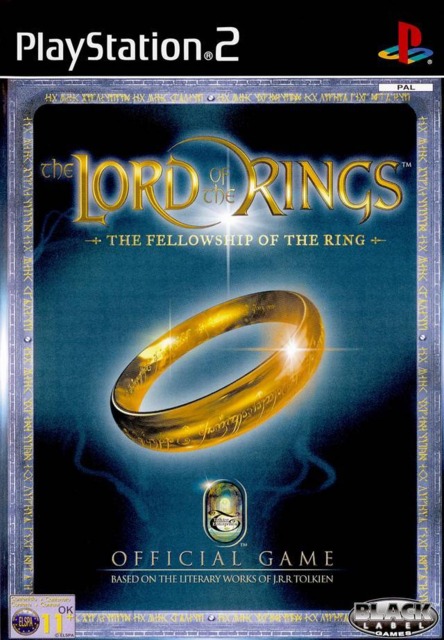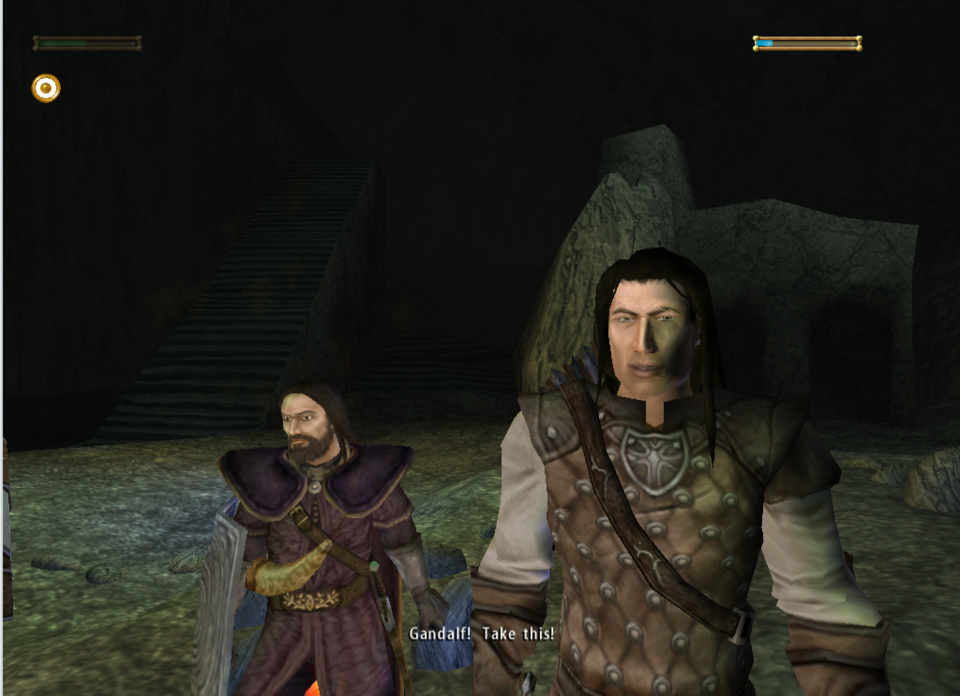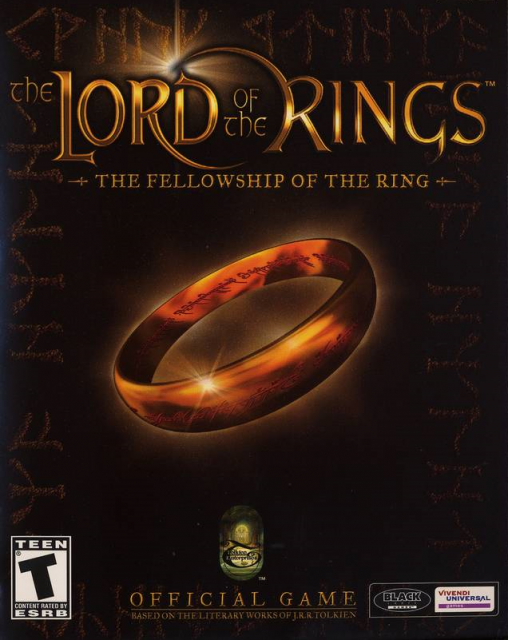Welcome to The Top Shelf, a weekly feature wherein I sort through my extensive PS2 collection for the diamonds in the rough. My goal here is to narrow down a library of 185 games to a svelte 44: the number of spaces on my bookshelf set aside for my PS2 collection. That means a whole lot of vetting and a whole lot of science that needs to be done - and here in the second round, that means narrowing our laser focus to one game per week (at least). Be sure to check out the Case File Repository for more details and a full list of games/links!

The Lord of the Rings: The Fellowship of the Ring, based on the J. R. R. Tolkien book of the same name, is perhaps the last adaptation of that material to not be in some significant way influenced by the movie trilogy of Peter Jackson. It was developed by Surreal Software, which at that point had only released the thematically similar Drakan games. I hadn't realized just how odd it feels to play through a modern version of this universe that was inspired by the book directly, though I wouldn't be all that shocked if the developers had some of the concept artwork of the movies to work from, not to mention influenced by many other adaptations in the sixty odd years since the original novel was published - there's some definite design similarities, but then both this game and the movies hemmed pretty closely to the books. There's many reasons to be certain that this draws from the novel directly, however. These include a lot of minor stylistic differences, like how characters more resemble their descriptions in the novels rather than their on-screen actors, but also sections of the novel that were lifted from the movie for the sake of time that are nonetheless expounded on here in full. Yes, the hobbits are almost eaten by a tree. Yes, you fight a barrow-wight. Yes, you meet Tom Bombadil and he sends you off on a fetch quest before he will help you, which seems entirely apropos for that character. The game even cuts out before the death of Boromir - something placed at the end of the first movie for dramatic effect, but didn't actually occur until some way into the second novel and in what felt like a relatively minor scene. (Boromir's just kind of bleeding out when Aragorn finds him, surrounded by Uruk corpses. Despite what the movies would have you think, Tolkien didn't write many action scenes, and preferred folk just use their imaginations.)
All the same, it's remarkable how close in design the next two Lord of the Rings adaptations - developed by veteran RPG creators Stormfront Studios - would be to this one, despite how those games stuck very closely to the movie and its designs. It's not even a case of "well, we didn't make the first game but maybe we should stick with that gameplay", since The Fellowship of the Ring and The Two Towers were made and released almost simultaneously. Maybe notes were passed, but I suspect they kept their distance given the different sources they drew from. Gameplay in The Fellowship of the Ring generally consists of running across a linear level, fighting enemies that come into range, and reaching the end to progress the story. What's unusual is that, early on when Frodo has yet to leave the Shire and embark on his quest, there's a whole lot of side-quests to complete. These early side-quests are essentially there to introduce mechanics: fixing a weathervane instructs the player on how to aim ranged weapons like rocks; collecting herbs for an elderly hobbit imparts the importance of locating healing items on the field; sneaking around Old Farmer Maggot's farm gives players a crash course on using stealth to avoid detection. That last one is particularly noteworthy, as Frodo is beset by the Nazgul before he can leave the Shire proper, and it leads to one of the most unnecessarily frustrating stealth sequences I've ever played as the fast-moving Black Riders are exceptionally hard to elude. As if to acknowledge just how unwieldy and rudimentary stealth was back in this era (which makes me super excited to play Splinter Cell and Hitman 2 for this feature, lemme tell ya), it mercifully never comes up again. In fact, neither do side-quests: the rest of the game is as linear as can be, especially once the Fellowship is formed, and the rest of the player's quest log is simply wall-to-wall story-critical objectives. The game's incredibly short also: I think it took me somewhere in the region of five to six hours to complete, which is hardly the sprawling RPG I was anticipating.

In addition to Frodo, the player also assumes the role of Aragorn and Gandalf at certain points of the game. I'll give the game credit for making all three feel very different to control, and giving all three their own special mechanics to consider. Frodo isn't much for combat but has a number of tools to make himself less conspicuous, including throwing rocks to distract foes and wearing the One Ring when absolutely necessary. The Ring will drain Frodo's spirit, which will cause him to collapse and die after too long; however, he can restore this "purity" - the nebulously-defined virtue that makes him resistant to the Ring's influence - after completing quest objectives. Aragorn is a versatile fighter that relies on both his sword and bow, and most of his sequences tend to involve cutting down lots of other fighters. Gandalf's a wizard, so he has a selection of spells to use but a finite amount of magic to draw from. Since he has a full heal spell to fall back on, Gandalf takes swigs of Elvish Miruvor to regenerate his magic instead of the healing items the other two characters rely on. Each character feels sufficiently different, and their presence as the playable character sets the tone for the sections to follow. (Alas, you can't play as Boromir, Legolas, Gimli or any of the other hobbits, but they do assist as AI partners.)
In many ways, the game is aggressively mediocre. The level design is indistinct and maze-like, even in areas which aren't explicitly mazes; the combat is some perfunctory three-hit combo business and has this annoying animation priority thing that knocks you out of attacks that should've landed, like the instant-kill stab for enemies on the ground; the facial animations are rough, even for 2002; and much of the game lacks a musical accompaniment, making all those generic rolling hills and Moria tunnels feel even more lifeless. However, I can't fault the game's strict adherence to its source material, and it's actually kind of cool that we have this semi-recent Lord of the Rings game that isn't at all influenced by Jackson's trilogy, for as much as I like what the Kiwi director, his Weta team, and his horde of costume and prop designers did to realize the novels in a visual medium. I might not recommend this game, and it's going to have a hell of a time fighting its two successors for a place on the shelf, but it's still this odd little flawed one-off Tolkien adaptation that I hold some affection towards. It's not unlike the rotoscope animation 1978 Ralph Bakshi movie in that regard.
Result: Progresses to Round Three.

Log in to comment